When High Mileage Pays Off
A few years ago, I was at a cars and coffee, walking down a row claimed by a British Car Club. An owner of a super-clean Lotus Evora caught me checking out their car and came over to tell me about it. “Less than 2000 miles,” was the first thing he said. “Nice,” I responded, but the conversation didn’t go much further—I didn’t know what else to say. I appreciate that others enjoy keeping a car factory-fresh, but the allure of keeping miles off a car has always escaped me—instead, it’s always seemed natural that distance covered equates to adventures and memories.
I can’t be the only enthusiast of high-mileage vehicles. After all, Matt Farah’s million-mile Lexus LS400 earned tons of well-deserved media attention. Bill MacEachern’s 800k-mile 1976 Porsche 930 Turbo is a revered feat of automotive endurance. These high-mileage stories, along with a few recent sales, got me thinking: Surely we have data at Hagerty that show which cars are appreciated specifically for their ability to rack up miles. Among those figures, I had a theory that I’d find that some people are willing to pay more for vehicles with extensive history or extremely high mileage. It was time to dig into the numbers and find out.
Rolling through the Numbers
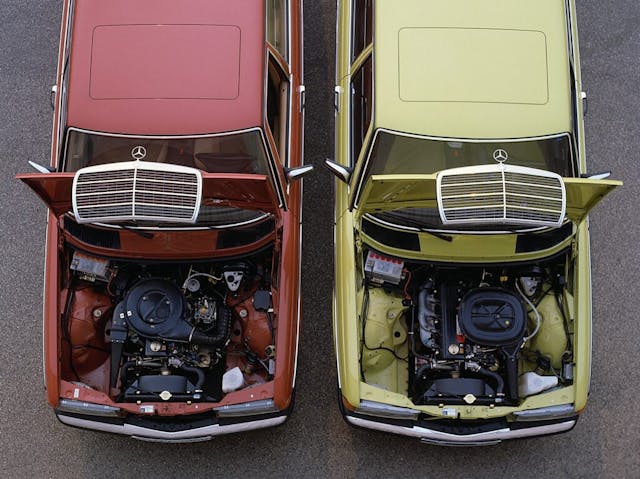
I assembled the hundreds of thousands of auction transactions in our database that have odometer data and set about determining the parameters of my search. 300,000 miles was the benchmark—you’d be surprised how regular 200,000 miles is these days (even my daily driver Toyota is about to roll over 250,000). I also tightened the net to exclude vehicles that no longer had their original engine. High-mileage enthusiasts would care about originality—the pride is in the maintenance and the longevity, after all. That disqualified some impressive survivors, like this 603k-mile 1990 Toyota Pickup, but it did help hone the data set to the cream of the high-mileage crop.
This left just under 150 vehicles sold on online auctions dating back to 2015. A quick caveat: Auction sales are admittedly not a complete view of the market, but they provide data we can see. There’s no question other models, like Cummins-powered Dodge Rams and Power Stroke–equipped Fords are racking up the miles and commanding good money, too—they just tend to transact privately, where mileage and other details are often unavailable.
The 300K+ Club
That filtered the data to our finalists. For anyone who appreciates a long-lived ride, this list is probably not very surprising.
All of the top high-mileage cars come from Japan or Germany—countries with a reputation for overbuilding their vehicles, at least when these particular models were constructed. Mercedes-Benz still offers high-mileage awards, with the million mark as its highest threshold. In fact, Mercedes was so confident in the reliability of its cars that it installed the industry’s first six-digit odometer on the 1971 350SL. It would take nearly 30 years for the rest of the industry to completely forgo the old five-digit odometer.
The only car from a non-German or Japanese manufacturer with three or more sales above 300K miles is the Volvo 1800—not surprising considering one was driven over 3.2 million miles. The model tied two other German cars (the BMW E28 5 Series and Mercedes-Benz W124) and two other Japanese cars (Honda CRX and the third-gen Toyota 4Runner) with three each. The Volvo 240, a favorite of our media team, would have made the list if it weren’t for a few engine replacements.

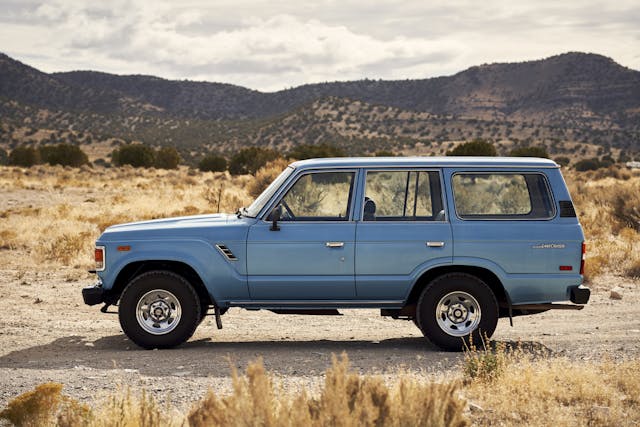
Tied for first are the FJ60 and FJ80 Toyota Land Cruisers, which, if you’re at all familiar with these trucks, is not shocking. These vehicles were designed with one purpose—to last forever in the harshest environments on earth. This is from a company who overbuilds everything to begin with: Over 42 percent of the vehicles in this data set are Toyotas. This isn’t limited to their trucks, either—some of their sports cars have racked up some serious mileage. Recently, this 388K-mile 1993 Toyota Supra Turbo sold for $52K after fees, and this 421K-mile 1991 Toyota MR2 sold above our #4 value at the time. Clearly, bidders weren’t turned off by the astronomical mileage, and maybe they were even bidding because of it. More on that in a moment.
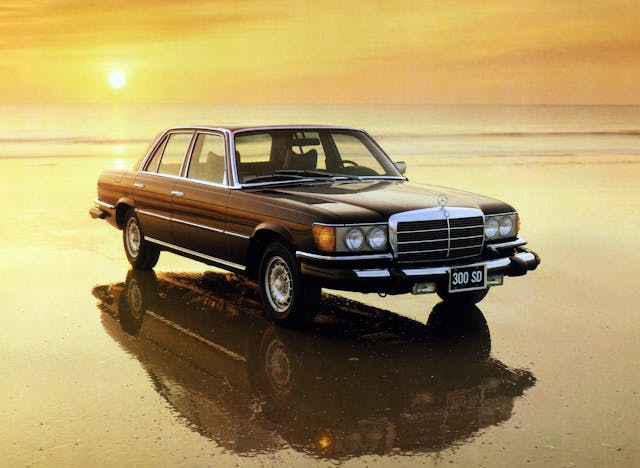
In third place is the Mercedes W123. While offered in a variety of body styles and engines, the only ones we saw make it past our mileage threshold were diesels, mostly 300s and a couple 240s, with eight of the 11 wearing a wagon body. The Mercedes 300TD wagon has a reputation (rightfully so) as one of the longest-lasting cars ever built. In fact, the car with the highest mileage on our list is a 1979 Mercedes 300TD, which was driven 782K miles by the time it sold in 2021. The only issues reported at the time of sale were that the A/C didn’t work and the cruise control would sometimes kick off. That’s it.


Fourth place finds a tie between the 100-series Toyota Land Cruiser and the first-generation Toyota 4Runner (combined with the pickup it was based on). In a few years, it’s likely that the 100-series Land Cruiser will sit at the top of this list—we have seen 51 transactions of vehicles with between 200,000 and 300,000 miles.
High Mileage Means…A Higher Price?
Having identified which cars occupy this rare air, I set out to determine whether there’s a market premium for extreme high mileage. Since mileage usually correlates to the sale price of a vehicle, I plotted price vs. mileage and added a linear line of best fit between the two. If we see “extreme-mileage” vehicles more often sell above this line, then there is likely a premium. For this, we only included sales since 2023 so we won’t have to adjust for a fluctuating market.
Looking at sales of our top three vehicles—the Toyota Land Cruiser FJ60 and FJ80, and the Mercedes W123—the one with the least convincing data is the FJ60. Let’s start there.
There is a clear trend line where price decreases as mileage increases—as expected. Plenty of examples with a lot of miles sold above this trend line, but this 1988 Toyota Land Cruiser FJ62 with 373,358 well-documented miles sold for $26,250—an outlier sale. That was a higher sale price than 43 percent of the FJ60s in the chart with fewer miles. One thing that made this Land Cruiser so desirable was that it had been owned for 35 years by a single family, who took exceptionally good care of it.
This trend becomes much more clear when looking at the next generation of Land Cruiser, the FJ80.
Here, we see two high-mileage outliers above the price vs. mileage line. The first one, a 467K-mile 1997 Land Cruiser sold for $17,295—higher than 40 percent of the FJ80s with lower mileage on this chart. What’s even more surprising is this truck was involved in a collision with another vehicle in 2014, and it doesn’t have the desirable triple-locking differentials. A 519K-mile 1995 Land Cruiser pulled in an even higher price at $18K—just under our #3 condition value.
The smaller data sets in the scatter plots illustrate specific examples, but if we expand the view to look at all FJ80 transactions regardless of time or mileage, and group them into mileage brackets, an interesting trend emerges:
As expected, median sales price falls as the mileage bracket gets higher. But, when mileage surpasses 400K, there is a significant bump in median sales price (+39 percent). You could argue that these auctions sites will be more strict with the overall quality of the vehicle as the mileage moves into this range, which could be contributing to the higher sales prices. But, going back to the scatter plot and comparing vehicle to vehicle, extreme high mileage looks more like a selling point and less like a liability.
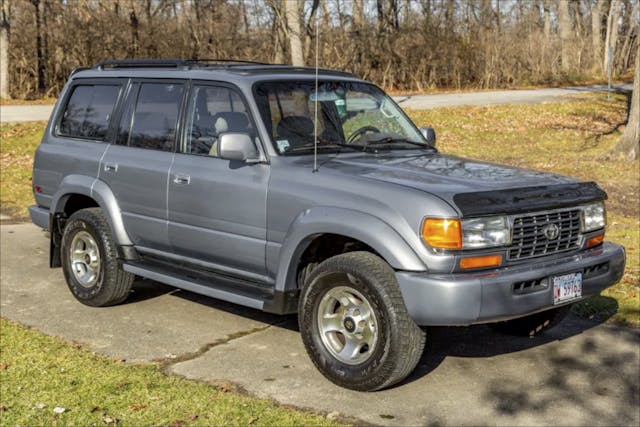
Compare this 519k-mile 1995 Land Cruiser to another 1995 Land Cruiser with “only” 256k miles. Both are the same model year, both have three locking differentials, and both were sold on the same auction site within the same year. While the 256K-mile one has half the mileage of our outlier, it sold for 42 percent less ($10.5K vs. $18K). You could argue the condition is slightly better on the high-mileage example, but not enough to account for such a high premium. Besides, if a collector is concerned with mileage, they would likely have been scared off by 256,000 miles, much less 519,000. The bidders left in auctions like these are not only unafraid of high mileage; they appear to see it as a bragging right. When rarity corresponds to collectibility, there are much fewer 500K-mile Land Cruisers than 200K-mile ones, and bidders seem to be responding.

We saw this same phenomenon in the FJ60. Examples with over 400K miles had a median sale price above ones with between 300K and 400K, but at only a 2 percent premium. However, there was only one sale with mileage above 400K, so I decided to exclude the chart from the story.
The same phenomenon presents itself in our final vehicle—the Mercedes W123. For simplicity, we’ll stick to just the 300TD wagon—the most common W123 in our high-mileage list.
This time, it is actually two sales of the same car only a couple months apart. This 422K-mile 1982 Mercedes 300TD was bid to $12K after fees, but the winning bidder failed to pick up the car. It was then relisted two months later, where it was bid up another $1300 to finally sell for $13,387—higher than half the cars with lower mileage in our data set. This proves that the first sale wasn’t a fluke, and instead may have drawn more attention to this 300TD with such extensive history.
Again, this trend wasn’t just seen in our reduced dataset. When expanding to include all 300TD wagon sales, the median sales price for cars with 400K–500K miles is 16 percent higher than ones with 300K-400K miles and six percent higher than 300TDs with half the mileage at 200K–300K miles.
There is, however, a limit to this madness. While 300TDs with 400K–500K miles sell for a premium, this is not true for vehicles with more than half-a-million miles. To be fair, the two cars with over 500K miles are well over that bar. This 632K-mile 1984 Mercedes 300TD was in pretty rough shape when it sold in 2022. Even so, its $8558 final price was 10 percent over #4 condition value at the time, proving it still sold better than other cars in similar shape. Same story with the 782K-mile 1972 300TD mentioned earlier. While it was in better shape overall, you can’t argue that three-quarters-of-a-million miles might place it as a #4 condition car. However, its $9579 final price was 50 percent over the our #4 condition value at the time.
Long May That Odometer Turn
I might not have found a fellow traveler in the owner of that low-miles Lotus, but when I reached out to Jessica Dickinson, the woman who bought that 782K-mile 1972 Mercedes 300TD Wagon (which she has affectionately named Bella), I discovered someone who shares the idea that the right car can be a long haul companion.
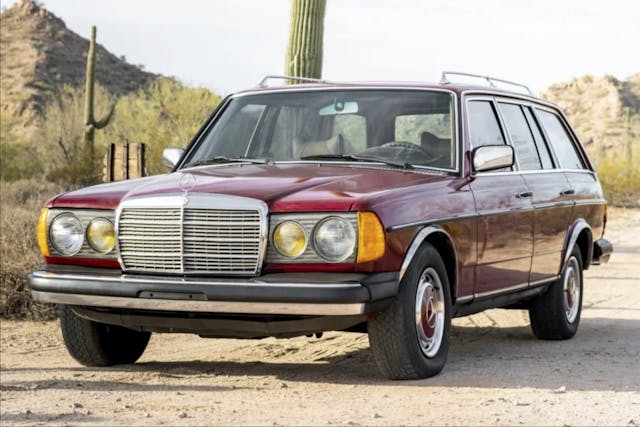
“You see, my family has a bit of a history with rock-solid Mercedes with more miles on them than you can shake a stick at,” she shares in an email. “So when I stumbled upon this absolute treasure of a 300TD on Bringatrailer.com, boasting mileage that would make your head spin, well, I just couldn’t resist.” When she won the auction, she got a one-way ticket from her home in Asheville, North Carolina, to Phoenix to pick up the 300TD.
“Armed with nothing but a cigarette lighter fan and a cooler packed to the brim with ice and beverages, and a tank full of fuel, Bella and I set out on the journey of a lifetime,” says Dickinson. “We cruised down Route 66, cutting through the desert heat like a pair of outlaws on the run, well more of a jog, she is a non-turbo diesel after all. Up I-70 we climbed, into the majestic Rockies, with Bella purring along like a champ. And let’s not forget the endless stretches of corn country, where the only thing sweeter than the scenery was the sound of Bella’s engine humming beneath us.”
The two made it home, and Dickinson shares Bella with friends, encouraging them to make their own memories. The numbers bore out my idea about a niche affinity for high-mileage cars, but at the end of this journey, it was the people who proved the passion.
***
Check out the Hagerty Media homepage so you don’t miss a single story, or better yet, bookmark it. To get our best stories delivered right to your inbox, subscribe to our newsletters.
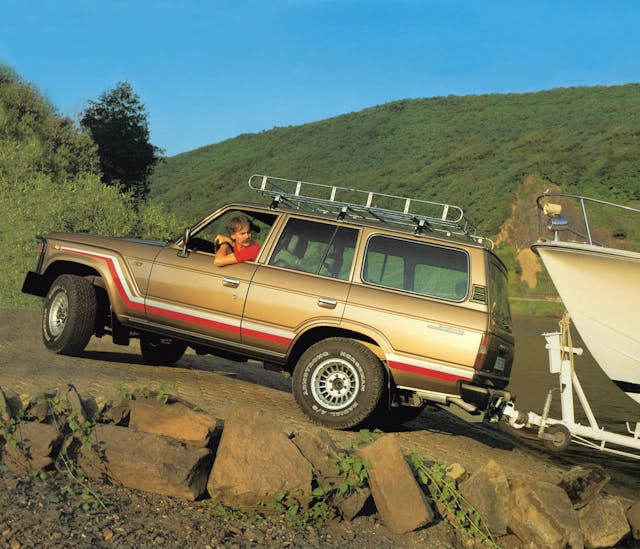


Irv Gordon will remain the Mileage King. All say his name.
I’m on my 4th Miata, having now owned one of each of the 4 generations. When I bought my current 2019 ND in 2023, it had been a garage queen, with just under 5000 miles in 4 years. I’ve put 10k more on it since then. My first 3 had an average of 200k each before trading them, and I fully intend this one to reach that mark. To me, cars like Miatas are meant to be driven all the time, rather than just on sunny summer weekends. I think this is one of the points this article makes. Sure, the Lotus may be pretty, with low mileage, but what’s the point if it’s not driven to its potential? That TD Mercedes wagon may look nice in your driveway, but Mercedes designed it to be used.
i HAVE A 2016 VW Pssat with BIT OVER a !70 and since I bought it from a rental co with a bit over 33,000 I can account for the milage. However, it does have an engine issue that I haven’t gotten a good answer on. It has one cylinder that blows lots oil and fouls the spark plug. This is in spite of trying to keep it well maintained. All this said I think it’s time to sell and let someone else keep pouring oil in it.
We bought our Ford Flex 12 years ago and are at 453,000 miles on the original powertrain (naturally aspirated six cylinder in FWD). Just normal wear and tear items replaced and runs great. My opinion, stay on schedule with maintenance, let the car warm up before hammering out the miles and talk nice to it. 🙂
Purchased a new Chevy Duramax in May, 2001. Manual transmission….reasonable speeds….just turned 600,000 miles. Am old….it will be it…or me.
I agree that “…it’s always seemed natural that distance covered equates to adventures and memories.” But if that’s the case it follows that one would BUY a car with low mileage so that one could maximize it use for his or her own “adventures andmemories.” No?
Selling a car of course is a different story. So if the intention is to sell your car, then sure keep the miles down. Somehow the article scrambles the logic and tries to validate the result by data.
Oh sure, using data to validate concepts – what a dirty rotten underhanded move, Adam!
I recall a time when low mileage, stop-start driving was considered a bad thing. The engine didn’t get hot enough to burn off harmful gasses and starting when all the oil had drained off the bores caused excessive wear. The ideal was a car that travelled far and fast, in fewer journeys, and kept all the parts working nicely. And we all “know” that leaving a car parked for long periods causes stuff to mysteriously break.
My wife is on her 3rd Tahoe a 2017……the 2005 is now owned by her sister and brother in law and is well over 300,000, the 2009 we still own and it has almost 300,000 and will be doing college duty for our youngest daughter soon…..the 2017 is at the 100,000 mark trouble and rust free…..we are considering a 2025 to stay ahead of the impending EV disaster…..living in Minnesota they have all been rust proofed new and kept clean during the winters…..REGULAR MAINTENANCE and care, don’t just turn the radio up address any concerns early.
Matt,
At the 2023 Ford Nationals I got first place with my 1995 Cobra 1 of 499 with the removable hardtop. It has 90k miles on it. I also received Celebrity Choice from
Ford Performance’s John Clor. His comments were “ trailer queens are nice but seeing someone bringing a driver back to its glory is what it’s all about”
Depends on available history of maintenance records. Is it a first owner with comprehensive service records or sold at a dealership without history records?
Last two times I sold my autos owned for more than 12 years, I ordered those cars from new, had all maintenance records from day one.
A 20-year old auto with very low mileage is still a consideration. How was it stored? Rubber and plastic parts fail regarding if the auto was driven or not.
A well maintained / documented 200K, 20-year old auto might be the better buy than a 20-year old auto with only 20K, that has only been parked in storage.
Yea, but, for instance, I change my oil every 3000 miles religiously ( like to see whats draining out of the pan unlike the new kid who’s gone on a coffee break while it drains ) and take a good look around for potential problems since I’m under there anyway. High mileage cars are frequently serviced by high mileage owners. My oil change records are most, but not all, of the receipts in the glove box and the NXT I write on the on the upper left corner of the windshield with a Sharpie after I’m done so I always know when the next is coming round at a glance.
I have a Custom MGB (SBC/4-speed, custom chassis/suspension/etc.), have way more invested then any resale value. I try and drive it (weather permitting) every weekend (BIG FUN). I have no plans to EVER sale it, had new paint a couple years ago (showing road wear), may paint it again, maybe not. It’s built to be driven, PERIOD!
I have a car that does not quite make the bar at only 239,721 miles currently. But it is a make unlikely to be see on this list making it notable. Interestingly this is still a Concours car. Missing out on a Platinum award by one point at last January’s Cavallino Classic. There was an article in Cavallino Magazine that came out on the day of the show about the car that said “Experts we consulted said they’ve yet to see a Ferrari, any Ferrari, that has logged more miles than this.” This car is my 1984 Ferrari 308 GTS QV. Also at the end of the article is says “… his F355 has clocked up 197,997 miles, while the F430 was at 196,566 at last check.” Those are both a bit higher now and both about to cross the 200,000 mile mark.
My 2004 Solara 3.3 V6 just passed the 600k km (375k miles). Original drivetrain. Everything still works including the AC. Bought it 7 years ago with 250k km. Changed struts, engine mounts, and drive axles.
Yes Toyota can make great cars.
I’m a big fan of high mileage cars, like the author points out in his opening paragraph: “it’s always seemed natural that distance covered equates to adventures and memories.” More miles means more stories.
The problem with high mileage cars is trying to sell them in a private sale. I had a 2001 Porsche 911 (996) that was in spectacular condition, rare color and exceptionally well appointed. At the time I decided to sell the car it had close to 108,000 miles. At the time of sale, that equated to an average of 4,900 miles annually. That’s a low mileage car, but because that number was over 100k, EVERY SINGLE BUYER used that against me and tried to essentially steal the car. After about six months of dealing with that, I ultimately I put it on a popular online auction site and had no problem getting more than what I wanted for the car.
Currently, there’s two great German cars on another popular online auction site, a 1988 Porsche 911 Coupe Commemorative Edition and a 1988 BME M5 that both have high miles. These also happen to be two of my favorite cars, and their mileage makes me want to buy them both (if only I had the money and space). The Porsche has 354,000 miles and the BMW has 282,000 miles. I am curious to see how the mileage affects the final price on these cars.
I personally own a 2002 Toyota 4Runner with 159,000 miles (which seems to be low mileage for a third generation 4Runner) and a 2004 BMW 325i with 172,000 miles. I have no plans to get rid of either of them any time soon. I also own a 1975 Ferrari Dino 308 GT4, it only has 34,000 miles right now—but that’s not my fault. I’ve only owned the car a couple of years now, and it only had 27,000 miles when I bought it. I’ve already but more mileage on it in two years than any one of its previous five owners did during the time they owned it over the past 49 years. And I don’t plan to stop. I’m looking forward to the day the odometer flips.